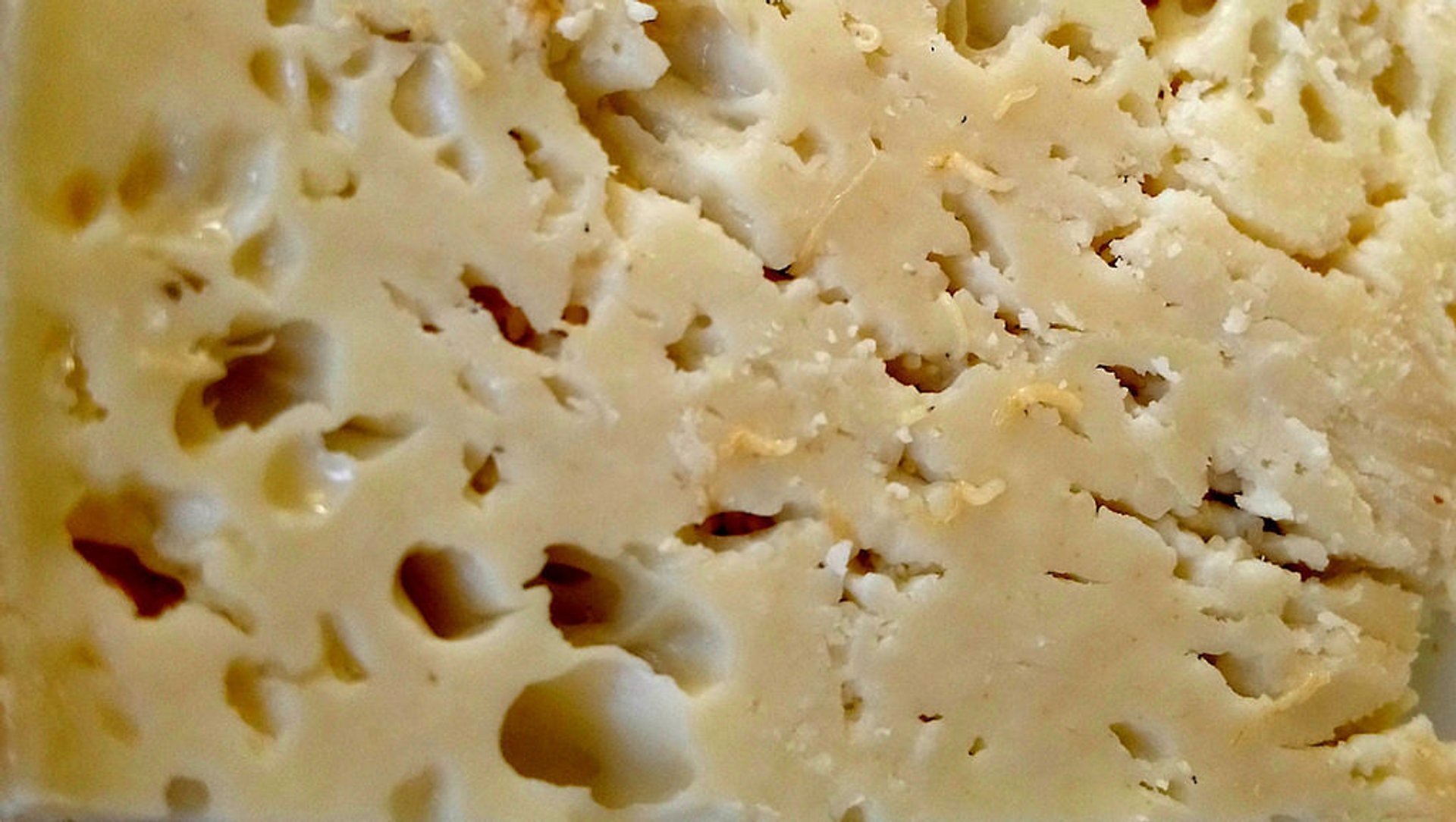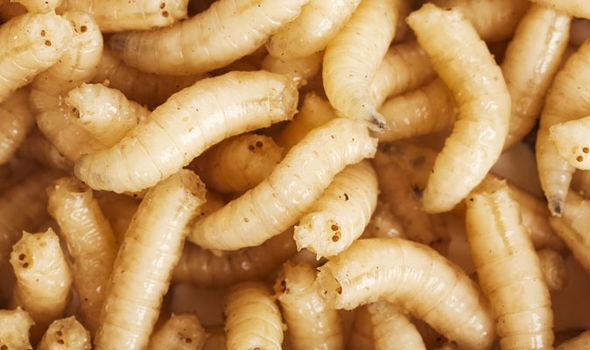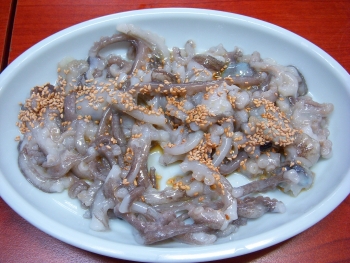World's Weirdest Drinks: Casu Marzu from Italy
 |
| Photo: Rove.me. |
The first thing you should consider before digging deeper into a certain topic is to know what it is. So, let's follow this article to know more about this Italian food Casu Marzu - one of the weirdest drinks in the world with Knowinsider!
What is Casu Marzu?
The food actually arouses more curiosity than the others: ‘casu marzu‘, the cheese with maggots. According to the allaboutitaly.net, the name literally translates from the Sardinian language to ‘rotten cheese‘, and it is indeed a sheep milk cheese, Sardinian pecorino, the decomposition of which is brought about by the digestive action of the larvae of the cheese fly.
The history of casu marzu - From local food to a well-known one.
As mentioned above about the definition of this food, casu marzu is formed from the mechanism of ‘rotten’ or ‘putrid’ cheese. With its origins in poverty, in the past, i is indicated by the culturetrip.com, it was the poor who consumed it, as they were forced to eat whatever they could, including cheese that had gone off. Somehow, this cheese became a delicacy in the intervening years, with diehard cheese enthusiasts trying their utmost to get a taste of this forbidden flavour.
 |
| Maggots. Photo: Daily Express. |
The underlying process in which maggots get inside the cheese
| It’s a surprisingly painstaking process to create casu marzu. Going beyond the normal fermentation, this sheep’s-milk cheese is allowed to reach a stage of decomposition. Holes are then cut into the pecorino (the name given to all Italian cheeses derived from sheep’s milk). These holes allow for flies to come and burrow into the cheese, laying their larvae down to incubate. The digestive action of the larvae gives casu marzu its soft texture, making it perfectly spreadable, with the wriggling maggots themselves appearing as tiny translucent worms around eight millimetres (0.3 inches) long |
Eating Casu marzu - Some related health problems
Consuming this cheese presents you with some very real dangers and a series of potentially fatal consequences, so you better be sure you really want to take the plunge. With no reported cases of the cheese harming anyone, you have to assess whether that’s enough of a green light for you to go for it.
You are encouraged to eat the cheese with the maggots still alive on it, but you can try it with the wrigglers removed, too. That seems largely pointless though if you’ve already decided to try this – in for a penny, in for a pound. But if you do consume the larvae live, make sure you chew them to literal death because the consequences of them getting to your stomach and living in your intestine could cause death. It’s also deemed unsafe to consume the cheese when the maggots have died within it, but refrigeration sometimes counters this concern for a bit.
The larvae aren’t content with just living on the cheese either; they also want your eyes too! In a quite frankly horrendous side note to consuming the cheese, you also have to shield your eyes when taking a bite. When disturbed, these maggots can launch themselves up to distances of around 15 centimetres (six inches), which presents the very real risk that they will make a beeline for your eyeballs and decide to call them home.
There’s a reason the EU doesn’t want casu marzu to be consumed, with the cheese breaking practically every food hygiene and health regulation there is.
Trivia about Casu marzu – delicacy or fad?
There’s no denying that casu marzu is a highly sought-after treat, and in Sadarina and the regions around it, it’s a bona fide delicacy. There are even regional variations of it, including casgiu merzu, which is produced in some Corsican villages. Although it’s a delicacy, does that outweigh the risks associated with consuming it?
That’s for the individual to decide, but with so many potentially fatal consequences linked to it, perhaps you’re better off sticking with baked camembert or a hearty cheddar to get your cheesy fix instead.
Casu marzu is also very hard to find. Breaking EU law means that the black market is the only way you can get hold of this, with prices doubling from standard pecorino.
 ONLY in JAPAN: Top 7 Weirdest Foods You Have Never Heard Before ONLY in JAPAN: Top 7 Weirdest Foods You Have Never Heard Before To all the foodies out there planning to travel to Japan, or to those who like to be adventurous, here are some interesting bizarre food ... |
 ONLY in INDIA: Cow Urine - one of the world's weirdest drinks! ONLY in INDIA: Cow Urine - one of the world's weirdest drinks! Cow urine has long been promoted by cow entrepreneurs as a panacea for a myriad of ailments. To many of us, it could be the ... |
 ONLY in KOREA: Top 7 Weirdest Foods to Try Out! ONLY in KOREA: Top 7 Weirdest Foods to Try Out! Every country has its own unusual food and South Korea is certainly no exception. At KnowInsider, we find out the top weirdest foods only in ... |


























